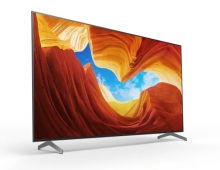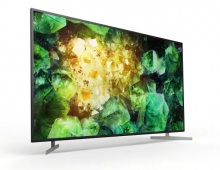
UHD Alliance Unveils "ULTRA HD PREMIUM" Logo and Begins Certification, Licensing
The UHD Alliance (UHDA), the inter-industry group that promotes the Ultra HD ecosystem, unveiled at CES a consumer-facing logo to identify devices, content and services capable of delivering a premium Ultra HD experience. The UHDA also announced the start of licensing of its ULTRA HD PREMIUM logo. This is reserved for products and services that comply with performance metrics for resolution, high dynamic range (HDR), peak luminance, black levels and wide color gamut among others.
The specifications also make recommendations for audio and other features.
Display |
Content |
Distribution |
|
| Image resolution | 3820 x 2160 |
||
| Color Bit Depth | 10 bit signal depth |
Minimum 10 bit signal depth |
|
| Color Palette |
|
BT.2020 color representation |
|
| High Dynamic Range (HDR) | SMPTE ST2084 EOTF A combination of peak brightness and black level either:
OR
|
SMPTE ST2084 EOTF Mastering displays recommended to exceed 1000 nits in brightness, less than 0.03 nits black level, minimum of DCI-P3 color space |
SMPTE ST2084 EOTF |
To ensure products bearing the ULTRA HD PREMIUM logo are certified and conform to the organization’s specifications, the UHDA has designated multiple, independent centers around the globe to handle testing. Companies throughout the ecosystem will work directly with these centers to have their products tested and certified.

The UHDA’s new ULTRA HD PREMIUM specifications cover multiple display technologies and reference established industry standards and recommended practices from the Consumer Technology Association, the Society of Motion Picture and Television Engineers, the International Telecommunications Union and others.
"Annual worldwide shipments of Ultra HD TVs are expected to grow nearly 719% over the next several years according to IHS’ forecasts, from nearly 12 million in 2014 to nearly 96 million in 2019, with over 300 million in use by the end of 2019. For the many mainstream consumers looking to make sense of the various terminologies, acronyms and feature descriptions at retail, standardization efforts such as the UHDA’s "ULTRA HD PREMIUM" can reduce consumer confusion and help ensure consistency of both buyer expectations and the delivery of the end experience - benefiting not only consumers, but also the industry as a whole," noted Paul Erickson, senior analyst at IHS Technology.
Both Samsung and LG Electronics have announced that their 2016 UHDTV models have been awarded the UHD Premium Certification by the UHD Alliance (UHDA).
 Samsung Remains committed to LCD TVs
Samsung Remains committed to LCD TVs
Meanwhile, Samsung Electronics unveiled Monday its new high-end UHD TVs before their official debuts at the CES trade show.
While its rival LG Electronics has poured resources into organic light-emitting diode displays, or OLED, Samsung has renewed its commitment to liquid crystal displays, or LCD.
This year, the Korean tech giant said it has applied its latest quantum-dot technology to all the five new models following the first generation launch last year.
Quantum dots are tiny particles that emit a different color of light according to their size. Applied to TVs, the colors are more accurate and the images are more vibrant compared to traditional LCDs. On top of that, they are more energy efficient.
Despite several advantages, TV-makers have been reluctant to adopt the technology because quantum dots generally contain cadmium, a toxic heavy metal that faces stiff regulations in many countries.
Samsung touted the drastically improved brightness that allows perfect blackness and more extreme color contrast. The latest TVs boast 1,000 nits of brightness, equal to the brightness of 1,000 candles.
Samsung said it offers the TVs as a reference device for Hollywood’s renowned studios to produce HDR or high dynamic range content, which is considered the next generation of home video content after the current UHD or 4K.
The company did not comment on the direct competition with OLED, but made it clear the company has no immediate plans to launch its own OLED TVs. Samsung suspended the OLED TV production in 2013 due to its poor profitability.





















